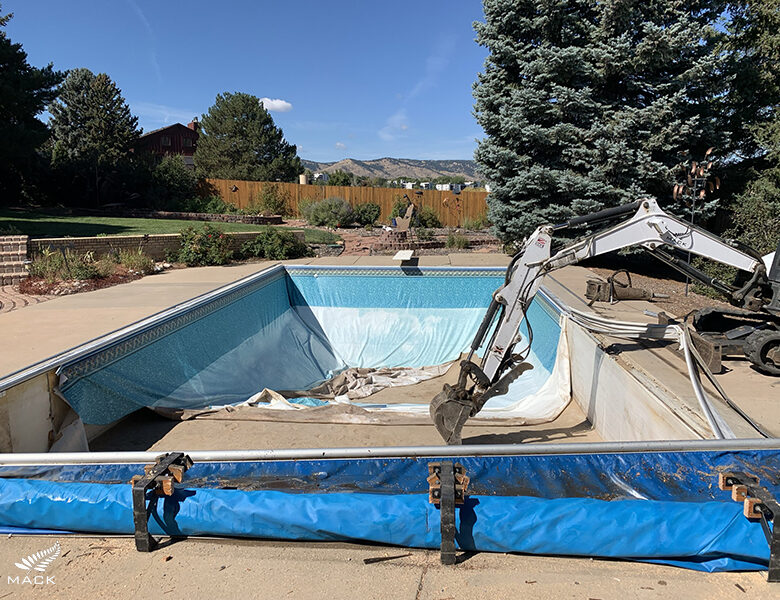Table of Contents
Removing a swimming pool is a significant decision for any homeowner. While pools can offer years of fun, fitness, and family time, they also require constant maintenance, repair costs, and can even limit backyard use. When the upkeep becomes overwhelming or the space needs a new purpose, swimming pool removal becomes a practical and appealing option.
In this article, we’ll explore why people choose to remove their pools, the different methods of removal, benefits, costs, and what to expect throughout the process.
Why Homeowners Choose Swimming Pool Removal
There are several reasons why homeowners decide to remove their pools:
- Maintenance Costs: Pools require constant attention, from chemicals and cleaning to seasonal servicing and repairs. These expenses add up quickly, especially for older pools.
- Underutilization: Many homeowners find their pool is used far less than anticipated, making the investment in time and money feel less worthwhile.
- Safety Concerns: For families with young children or pets, an unused pool may present a safety hazard.
- Increased Usable Space: A pool takes up a significant portion of yard space. Removing it opens up opportunities for gardens, patios, or additions to the home.
- Improved Property Value: Contrary to popular belief, removing an outdated or damaged pool can actually increase home value by making the yard more versatile and easier to maintain.
Types of Swimming Pool Removal
There are two main methods of pool removal: partial removal and full removal.
1. Partial Pool Removal (Filling In)
This is the more common and cost-effective option. The process involves:
- Draining the pool completely
- Punching holes in the bottom for drainage
- Removing the top layer of concrete or fiberglass
- Filling the remaining space with gravel and soil
- Compacting the soil for future landscaping
This method is faster and less expensive, but it may limit future building on the site (such as adding a structure or room extension) because the land isn’t fully restored to its original condition.
2. Full Pool Removal
This involves:
- Draining and demolishing the entire pool structure
- Removing all debris from the site
- Backfilling the hole with soil and compacting it properly
Although more costly, full removal restores your yard to its pre-pool condition, allowing for greater flexibility in how you use the space in the future. It’s also often the preferred choice for homeowners looking to build where the pool once was.
Benefits of Removing a Swimming Pool
Removing your pool can offer several long-term advantages:
- Lower Insurance Costs: Pools increase liability risks, which can raise your homeowner’s insurance premiums. Removing the pool may reduce your rate.
- Reduced Utility Bills: Pools consume electricity and water. Once removed, you’ll likely see lower monthly costs.
- Easier Yard Maintenance: Mowing, landscaping, and seasonal prep are simpler without a pool in the way.
- New Design Possibilities: From outdoor kitchens to gardens or play areas, removing your pool unlocks new potential for your yard.
- Peace of Mind: No need to worry about fencing, covers, or safety issues related to the pool.
How Much Does Pool Removal Cost?
The cost of swimming pool removal depends on factors such as pool size, type, access to the site, and whether you choose partial or full removal. On average:
- Partial removal ranges from $3,000 to $8,000
- Full removal can cost between $7,000 and $15,000 or more
Additional expenses may include permits, debris hauling, and soil compaction.
Many contractors offer free estimates and can provide a clear breakdown of costs. Be sure to hire a licensed and insured professional with experience in pool demolition.
What to Expect During the Process
- Initial Assessment: A contractor visits your property to evaluate the pool and determine the best removal method.
- Permitting: You may need a demolition permit from your local municipality.
- Drainage: The pool must be properly drained, adhering to local regulations to prevent flooding or environmental harm.
- Demolition and Debris Removal: The pool is demolished and materials are hauled away or buried (for partial removal).
- Backfilling and Compacting: The hole is filled with dirt or gravel and compacted to prevent future settling.
- Final Grading and Landscaping: The area is leveled and prepared for whatever you plan to do next—whether that’s turf, planting, or a new patio.
Final Thoughts
While the idea of removing a pool might seem daunting at first, it can be a wise investment that adds long-term value, safety, and versatility to your home. Whether you’re looking to reduce maintenance, repurpose your backyard, or prepare for resale, swimming pool removal is a strategic step toward a more practical and personalized outdoor space.
If you’re considering pool removal, consult with a professional contractor who specializes in demolition and landscaping to explore your options and get started on reclaiming your yard.




